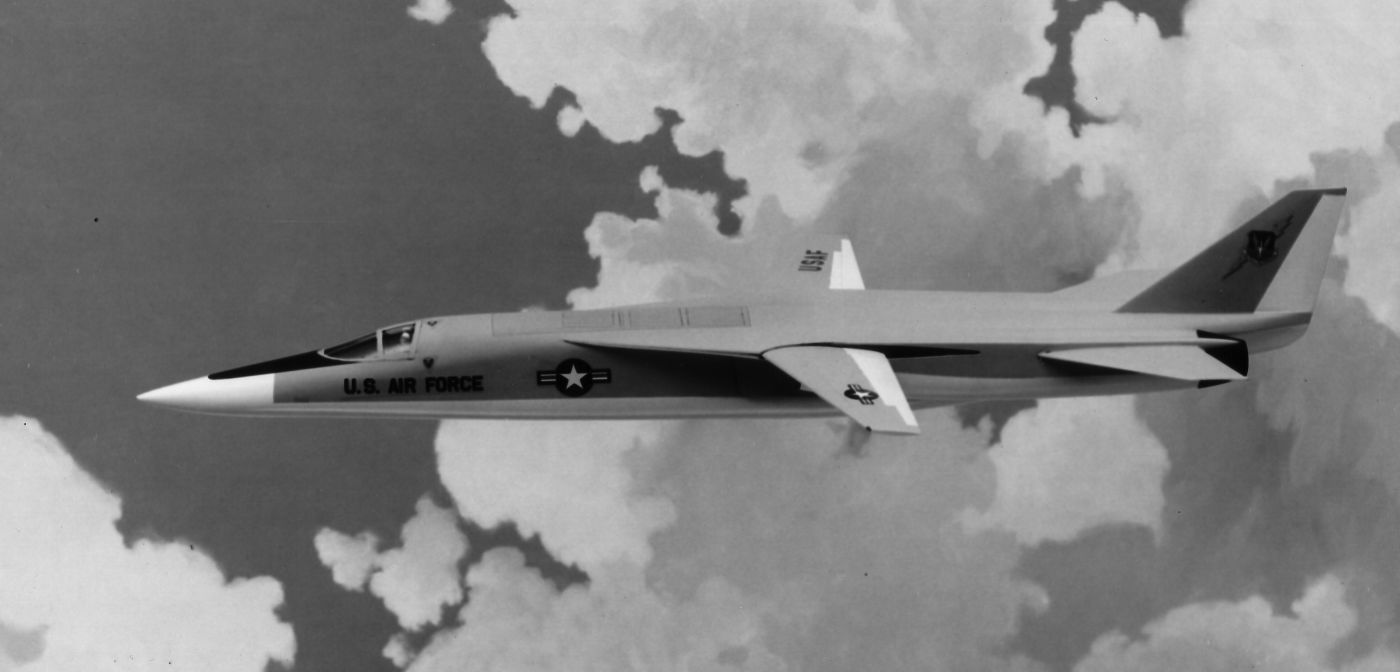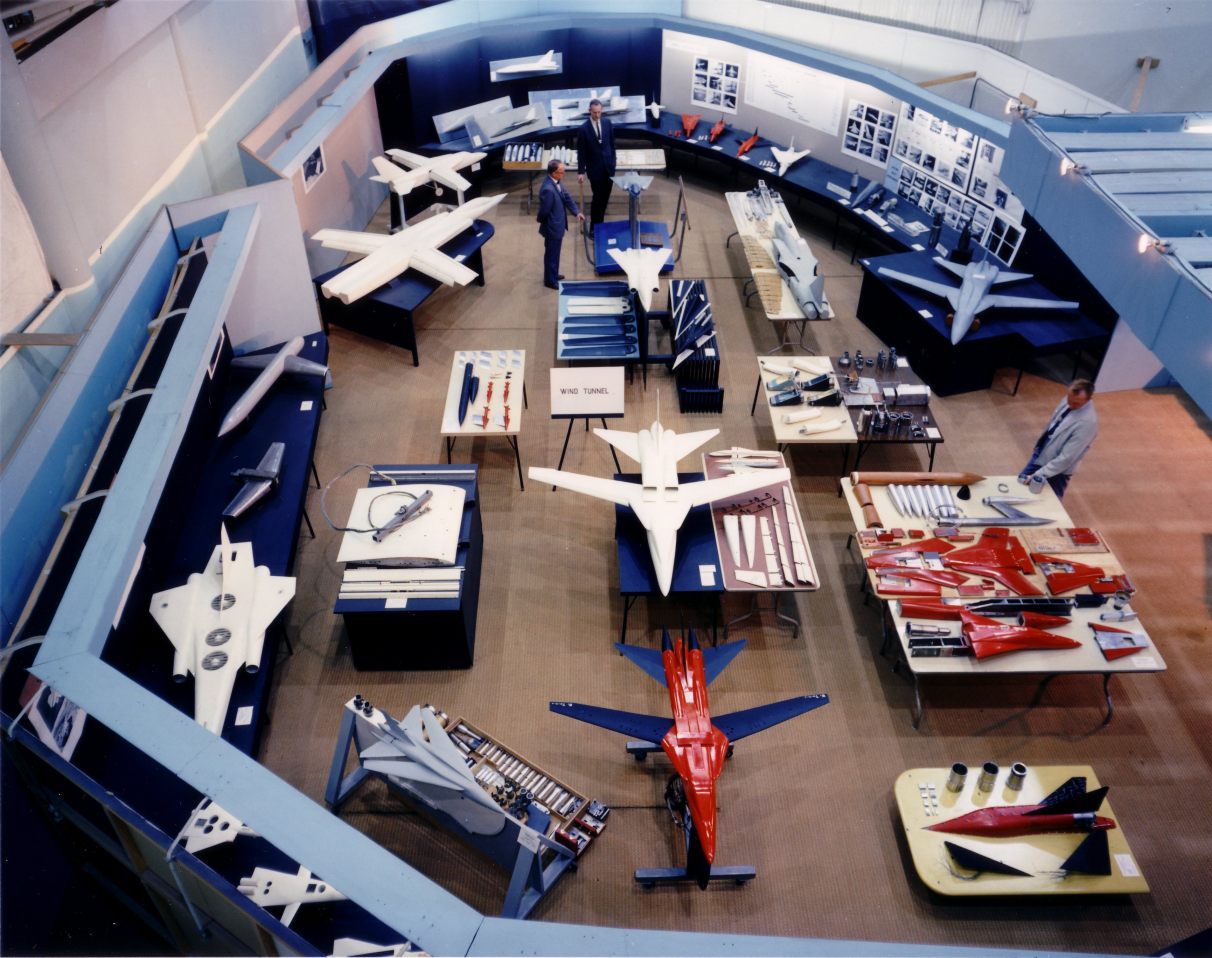This illustration has been floating around for a good long while, but unfortuantely, no data seems to come along with it. It is an actual honet-to-Odin General Dynamics PR glossy, not fan art (this particular copy comes from the Jay Miller collection). What it appears to show is an F-111 with a stretched fuselage, and that fuselage stretch containing doors for three or four lift jets (or perhaps 6 or 8… the “doors” visible in this view seem to be on the port side of the fuselage, not on the centerline, indicating that there may be matching features on the starboard side). But the exhaust pipes for the main engines at the tail show no indication of being vectorable, which would argue against VTOL. So just what the hell is this? Are those lift jets, but only used to provide STOL performance? Is it a true VTOL, with some vertical thrust at the tail that’s not apparent in this view? Or are those doors for something else… nto lift jets, but an unconventional weapons system?
Another thought occurs. Along with being streched, the fuselage is also a bit deeper, with unusual “chines” along the lower edge. This presents the appearance of a flying boat hull. Could this be an *amphibious* F-111… with the doors on the upper surface perhaps being secondary inlets used while on the water? Perhaps an amphibious F-111 with additional lift jets to get it clear of the water ASAP?
It would be nice to know.


If you like this sort aerospace history and/or the other stuff I post, you can support the cause by Buying My Stuff, which includes aerospace drawings and documents, as well as the journal of unbuilt aircraft and spacecraft projects, Aerospace Projects Review. Or you could just Donate.

















